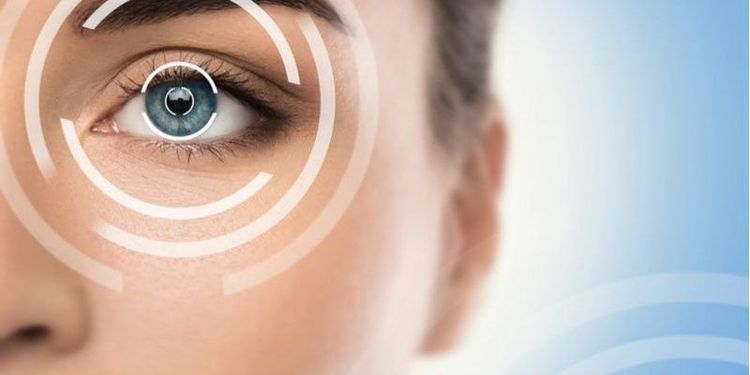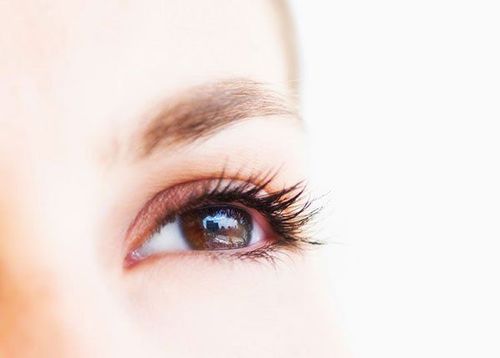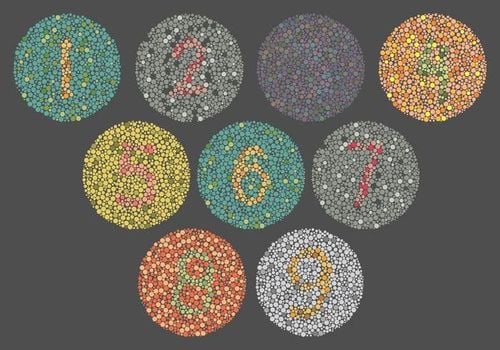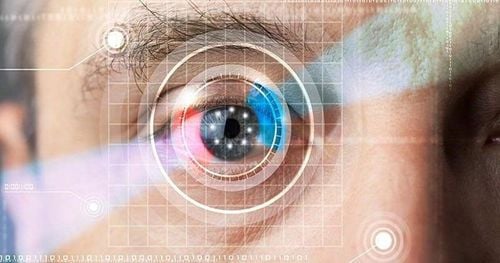This is an automatically translated article.
To convert from reflected light into an image, it needs to go through many complicated stages: Light must pass through many layers of the structure of the eye, focus light at the retina, and be converted into electrical signals along wires. The optic nerve enters the visual center at the back of the brain.1. What role does the eye play?
Eyes have an important role for human life activities, the most important of which is the ability to see eyes. The eye receives light from the external environment and converts it into electrical impulses that are sent to the brain to be processed into images.
In addition, eyes also perform many other important functions such as:
Adjusting up, down, left, right movements to balance with head movement Helps people express happy or sad emotions by secreting tear. Function to protect the skull from damage

Mắt giúp con người bày tỏ cảm xúc vui hoặc buồn bằng việc tiết ra nước mắt.
2. How vision works
Why can the eye see? In order to see, light has to go through an arduous process through the layers of the eye to create an image.
The first thing light comes into contact with when entering the eye is a thin layer of tears on the surface, followed by the cornea, the front window of the eye. This is where the light is concentrated. The posterior surface is aqueous humor, which circulates throughout the cornea, with the task of maintaining a constant intraocular pressure.
After penetrating the aqueous humor, the light reaches the pupil. It is the colored part of the eye, located in the center of the iris. The pupil is responsible for changing the size to control the amount of light that is introduced deeper.
Next is the lens, which acts as a camera to focus the light, adjusting its shape depending on how far away the object is reflected.
Light now passes through the center of the eyeball to enter the bath of moisture from the vitreous. The last point that light reaches is the retina, which is located at the back of the eye. Focused light hits cells called photoreceptors.
The retina has the same role as the screen in a cinema. The difference is that in the retina there are many components:
Blood vessels that carry nutrients to nerve cells. The macula is located in the center of the retina. In addition, the fovea is the focal point of the eye, it has nerve endings that are particularly sensitive to light, called photoreceptors, which are more sensitive than any other part. Photoreceptors are of two types: rods and cones. They are special nerve endings that help convert light into electrochemical signals. The retinal pigment epithelium (RPE) is a layer of dark tissue beneath the photoreceptors. These cells absorb excess light so that the photoreceptors can give a clearer signal. They also move nutrients from (and waste from) the photoreceptors to the choroid. Choroids are separate from RPE. It is located behind the retina and is made up of many small blood vessels that supply nutrients to the retina and the RPE. The sclera is the hard, white, fibrous outer wall of the eye. It is connected to the clear cornea in the front, whose function is to protect the delicate structures inside the eye. Signals from photoreceptors travel along nerve fibers to the optic nerve. It sends signals to the visual center at the back of the brain.
And that's how vision works: Light, reflected from an object, enters the eye, focuses, is converted to an electrochemical signal, travels to the brain, and is interpreted, or "seen," under image format.

Tín hiệu từ các tế bào cảm quang đi dọc theo các sợi thần kinh đến dây thần kinh thị giác và gửi các tín hiệu đến trung tâm thị giác
3. The ability of the eye to see?
In the normal person there are 3 types of cone cells in the eye. Each cell type can distinguish 100 different colors. Therefore, most scientists assume that humans are capable of distinguishing about 1 million different colors. However, the exact number has not been determined since the perception of color is a subjective factor, which varies from person to person.
People with color blindness have only 2 types of cones and are only able to distinguish 10,000 different colors. On the flip side, some people have up to four types of cone cells, which can distinguish up to 100 million colors, a condition known as "tetrachromats".
Vinmec International General Hospital is one of the hospitals that not only ensures professional quality with a team of leading medical doctors, modern equipment and technology, but also stands out for its examination and consultation services. comprehensive and professional medical consultation and treatment; civilized, polite, safe and sterile medical examination and treatment space.
Please dial HOTLINE for more information or register for an appointment HERE. Download MyVinmec app to make appointments faster and to manage your bookings easily.
Reference source: webmd.com












